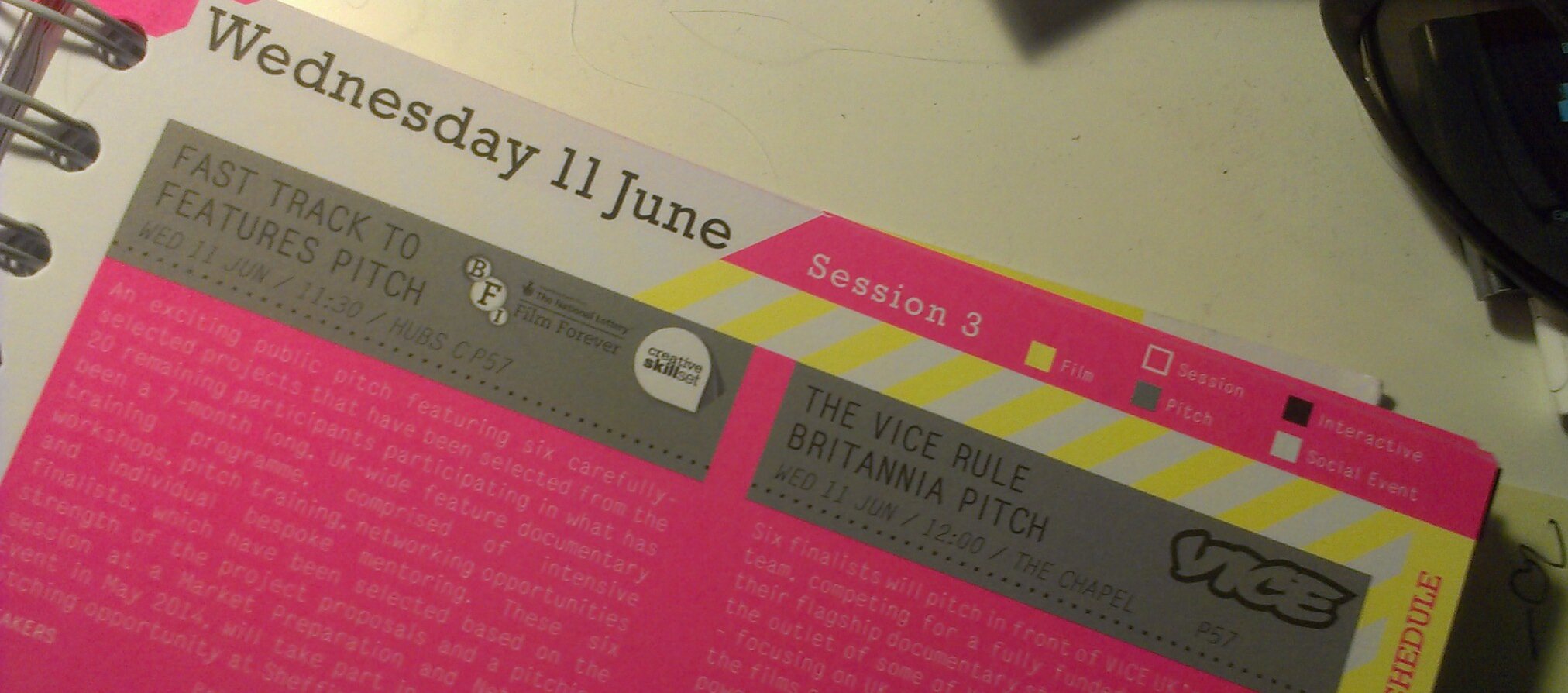Commissions
Good Pitch…

Pitching is always difficult as you’ve got to condense your project down into a couple of clear, compelling and succinct minutes in the hope of enticing a commissioning editor or funder to engage with the project and want to buy into it (both financially and emotionally). The pitch often comes after many weeks, months or even years of a producer or filmmaker tussling with the subject – researching all the angles and then discarding some of them; deciding on the POV and changing that POV when their main character turns out to be not so interesting; and sometimes having shot nothing, and at others emerging blinking from the edit suite in search of some finishing funds.
If you are lucky, you will have established, built and nurtured relationships with the people in power long before you need to ask them for money; maybe they’ve been tracking your career for a number of years and are receptive to discussing your new projects in a collaborative and supportive way. But more likely, you’ll find yourself a situation where you are forced to pitch cold to someone who has never heard of you, who doesn’t know your work and has never heard of your project. That’s intimidating enough, but then you’ll find that you have to do this to a panel of people you’ve never met, and in front of an audience of up to 200 of your peers. And once you’ve pitched under the bright lights of the auditorium, you have to stand there while they deliver their equally public assessment of your project.
However, the public pitch ordeal does offer some advantages: namely that you will have the undivided attention of several commissioning editors for y0ur allotted seven minutes, as well as that of the audience, whose number might include potential co-producers, executive producers or funders who may want to engage with you and your project in the future. Filmmakers in the audience benefit too, by being able to observe different pitching styles (many festivals sell specific Observer tickets to their forums to facilitate this) and also to hear the reactions of the decision makers. What’s remarkable is that the feedback is remarkably predictable, whatever the subject, wherever the forum, whoever the panel are.
At the Krakow Film Festival’s Dragon Forum 2014 and Sheffield Doc/Fest’s Fast Track to Features 2014 public pitches a variety of feature documentary projects were pitched for feedback/advice/cash prizes and several themes emerged from those offering feedback.
Good Pitches
The panels generally responded well to the following elements being in evidence in the project and expressed via the pitch (NB. examples given are completed projects with similar elements rather than those that were pitched at Doc/Fest or Dragon Forum as most of those are still at too early a stage to share):
- A personal way into the story – This seems particularly important for new and independent filmmakers, as it offers the filmmaker a cast-iron reason for them making the film, rather than anyone else. A filmmaker might be exploring a subject close to their heart or to which they have unique access (e.g. Jacqui Morris photojournalist Don McCullin’s assistant prior to directing McCullin) , and/or might be an active character within the film who undergoes a period of discovery/change as the story unfolds around them (Dan Edelstyn in ) .
- Passion – It reassures the decision makers that the filmmaker will have the motivation to stick with the project when things get tough.
- Strong female characters – Since the emergence of the Bechdel Test (does a film feature two or more women, do they communicate with each other and do they talk about something other than men?) and various initiatives to improve the portrayal of women on screen and their involvement behind the camera, the industry is suddenly more alert to gender representation and therefore more likely to react positively to interesting, complex female characters.
The Bechdel Test is largely focused on fiction features, but the documentary community would do well to take note too. One UK documentary festival in the UK in 2013 showed a number of documentaries by very well respected, award-winning filmmakers; the only woman in five films screened that wasn’t a) a prostitute/posing as a prostitute b) seen only when washing up in the kitchen, was a filmmaker making a cameo in her own film. Examples of documentary films that have strong and complex central female characters include Cutie and the Boxer and Marina Abramović: The Artist is Present.
- Trojan Horses – A certain type of funder loves (demands) documentaries that focus on a problem in society or the wider world; films that are devoted to righting a wrong. Many others, TV commissioners included, tend to be a somewhat allergic to overtly issue-driven films. If you have a topic that might be considered worthy, the way to pitch it is to use something else as a vehicle. This could be the story of an underdog inventor who provides a way into a story about women’s issues (in more ways than one) in Menstrual Man or a personal journey of recovery that allows us to explore neurology in My Beautiful Broken Brain.
- A realistic production timescale – Funders and commissioners generally have funds that ‘expire’ due to regulations or tax years so they need to be able to be confident that their funding window coincides with the correct phase of production (e.g. development funding obviously needs to be spent at the start of the project and post-production funding during the edit). TV commissioners are also thinking about their schedules two or three years in advance and so need to know when the finished film will be ready to transmit.
Pick up some more good pitching tips from Danish producer Sigrid Dyekjær here.
Find out what to avoid in a pitch here.


Discussion
Comments are disallowed for this post.
Comments are closed.